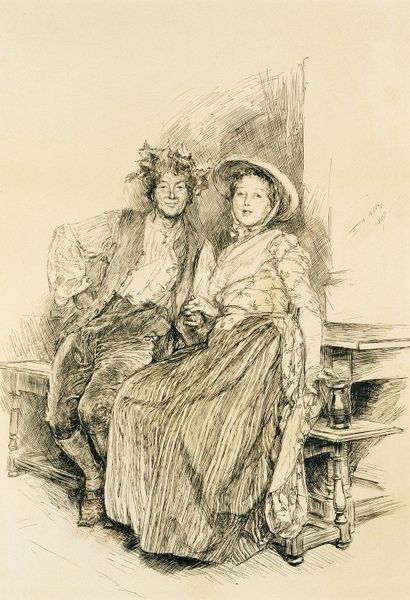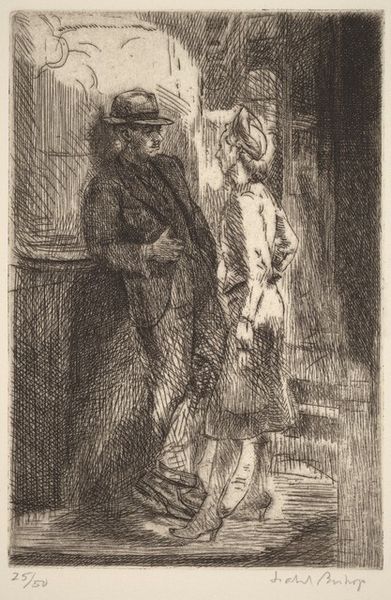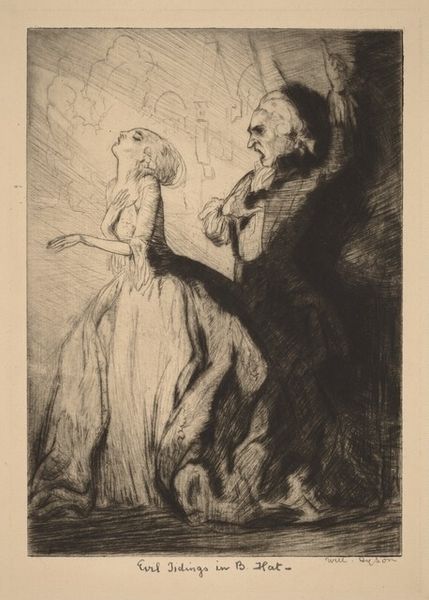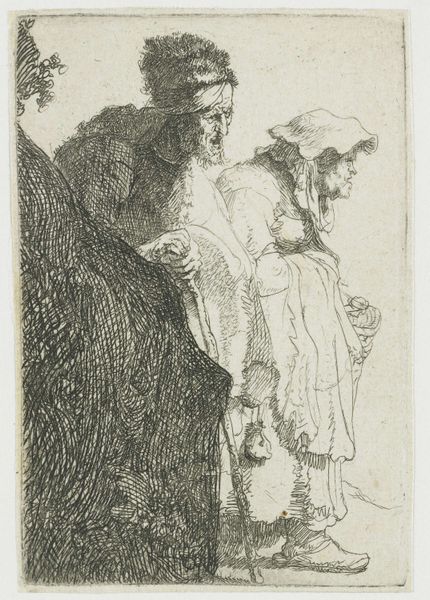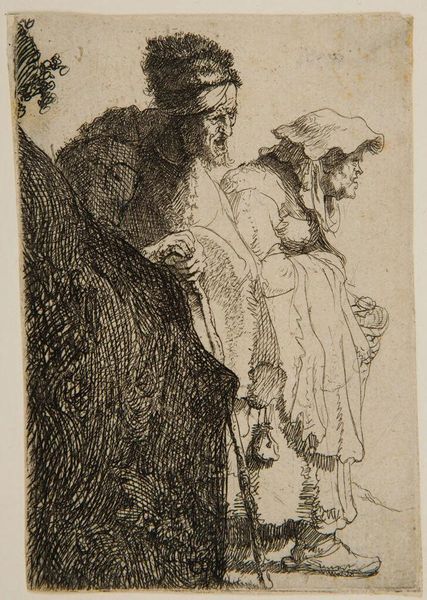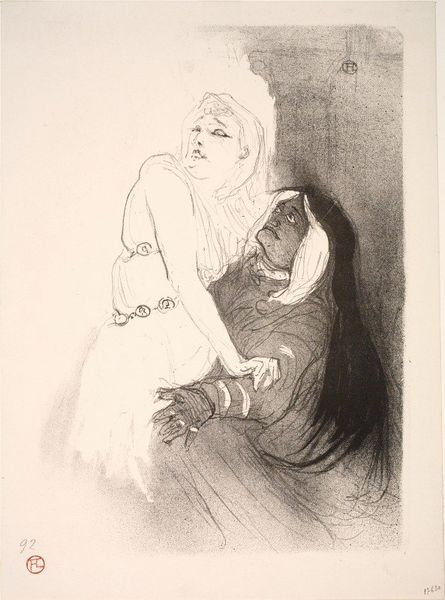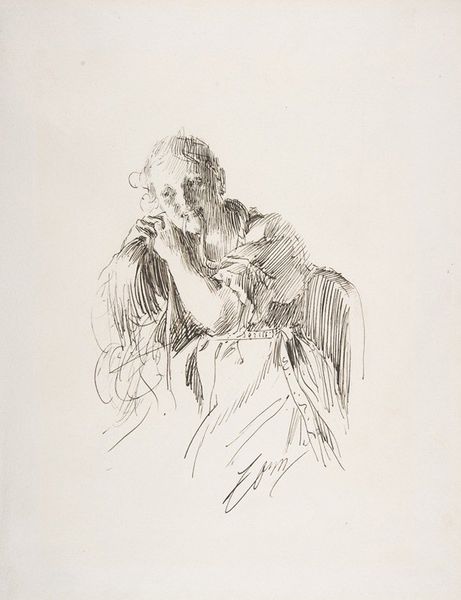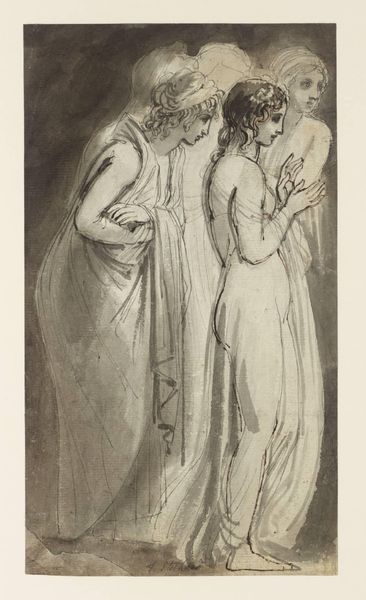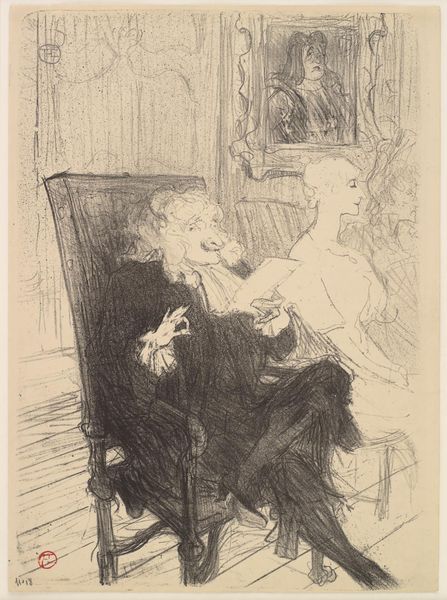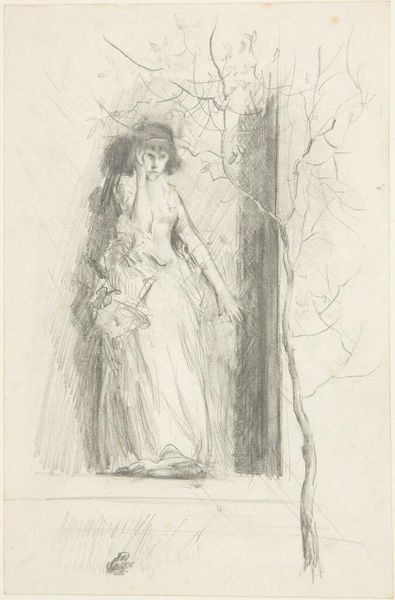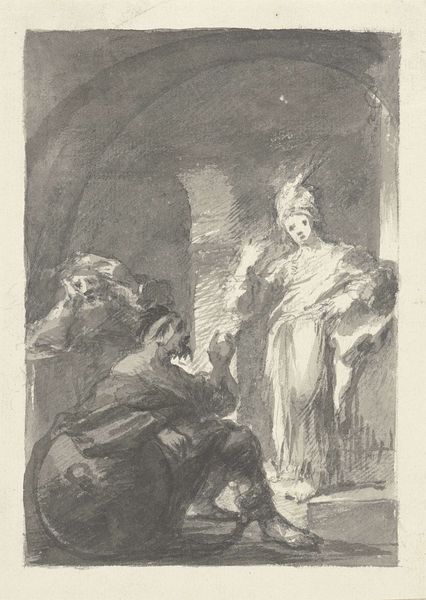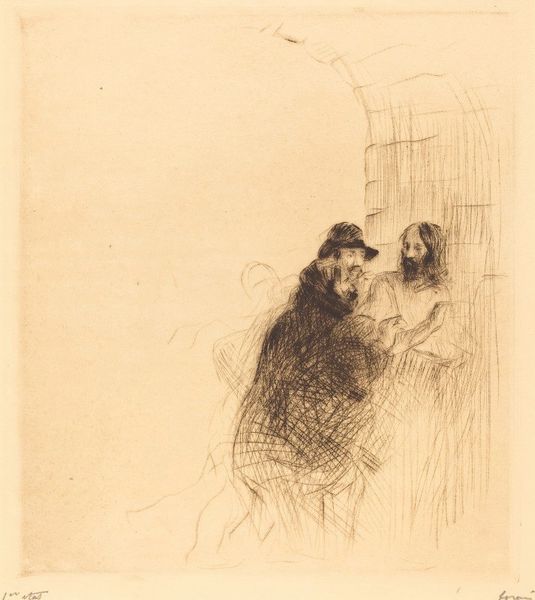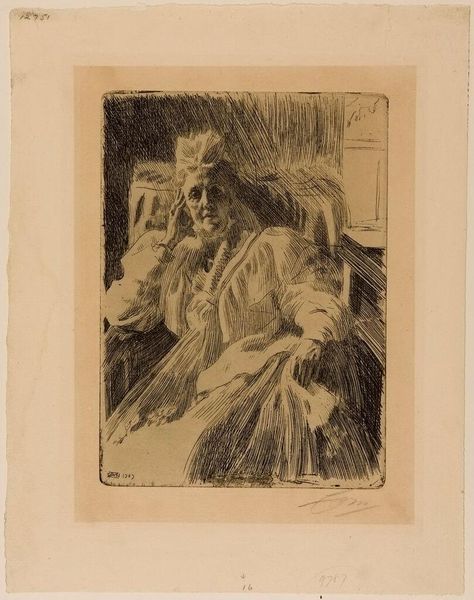
drawing, pencil
#
portrait
#
pencil drawn
#
drawing
#
charcoal drawing
#
figuration
#
pencil drawing
#
pencil
#
portrait drawing
#
academic-art
Copyright: Public Domain: Artvee
Curator: This drawing by Edwin Austin Abbey depicts Cressida and her uncle from Shakespeare’s “Troilus and Cressida,” capturing a rather fraught interaction. What’s your initial take? Editor: My first thought is how physically present, even domineering, the uncle seems compared to Cressida. The hatching and heavy application of pencil create a tangible weight, whereas Cressida is drawn with delicate and wispy lines. The power dynamics seem very clear here. Curator: Precisely. The imagery communicates much about their relationship and her circumstances. Consider the play: Cressida is eventually traded to the Greeks. This drawing anticipates that vulnerability and loss of agency through her pensive expression and positioning relative to her uncle's looming presence. She’s almost shrinking. Editor: I wonder, though, about the production of this image. It is, after all, just a pencil drawing. Was this perhaps a study for a larger painting, or intended for reproduction as an illustration? The academic style and dramatic composition seem very well suited for popular consumption and circulation, and that has significant social implications. Curator: A fair point, it speaks to broader questions regarding depictions of women and power. However, within the Shakespearian canon, Cressida is a powerful figure. In this rendering, note how Abbey captures an echo of Cassandra-like premonition in her expression, hinting at a character capable of deeper awareness beyond the immediate scene. Her seeming passivity is misleading, as it shields inner strength. Editor: Well, whatever its original purpose, and whether the artist intended it or not, I see a work that is completely intertwined with material considerations and questions of distribution. It highlights the complex interplay of artistic choices, social structures, and Shakespeare's lasting impact, far beyond simple illustration. The cheap reproducibility of drawings speaks directly to issues of accessibility. Curator: Interesting perspective. It seems that "Troilus and Cressida" continues to provoke multiple interpretations, not just regarding the tragic romance itself, but in how it reveals a story with enduring resonance. Editor: Exactly. Looking at it again, it prompts one to contemplate the accessibility of art and how meaning shifts when circulated broadly.
Comments
No comments
Be the first to comment and join the conversation on the ultimate creative platform.
